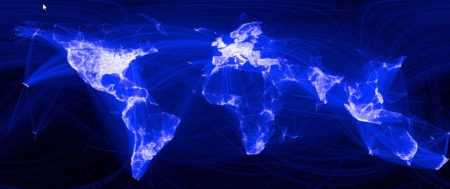
This interview transcript was originally published by the World Policy Institute on 13 May 2016.
The world is becoming more connected by the day. Whether through the Internet and social media or through increased international trade, the world today does not look the same as it did 100 years ago. According to Parag Khanna, leading global strategist and award-winning author of numerous books including his latest, Connectography, these links are only going to increase in the future. World Policy Journal spoke with Khanna to discuss the concept of connectography and what the connected future holds for politics, people, and the environment.
WORLD POLICY JOURNAL: In your new book Connectography, you suggest that the current global order is changing. How exactly is this happening, and what does the world of the future look like in your opinion?
PARAG KHANNA: Right, so, the premise is that the forces of connectivity—transportation, energy, innovations, but also capital market, cultural integration, trade, and so forth—are reshaping the meaning of geography and the extent to which political geography based at the boundaries dictate our fate versus the connective forces that make connectivity more our destiny than the geography has been for now, or up until now. And that’s the pattern that you need to take a step back and take a 5,000-year view to appreciate. So we’ve reached the sort of tipping point where that connectivity does in fact matter more than divisions. And we have so much connectivity across political borders, and yet we have so few wars along those borders. So we no longer really fight over a border. Instead we are now fighting over connectivity. But we’re also benefiting from connectivity greatly at the same time. So that’s where you get a picture of the world that’s really far more complex than what we’ve had here before.
